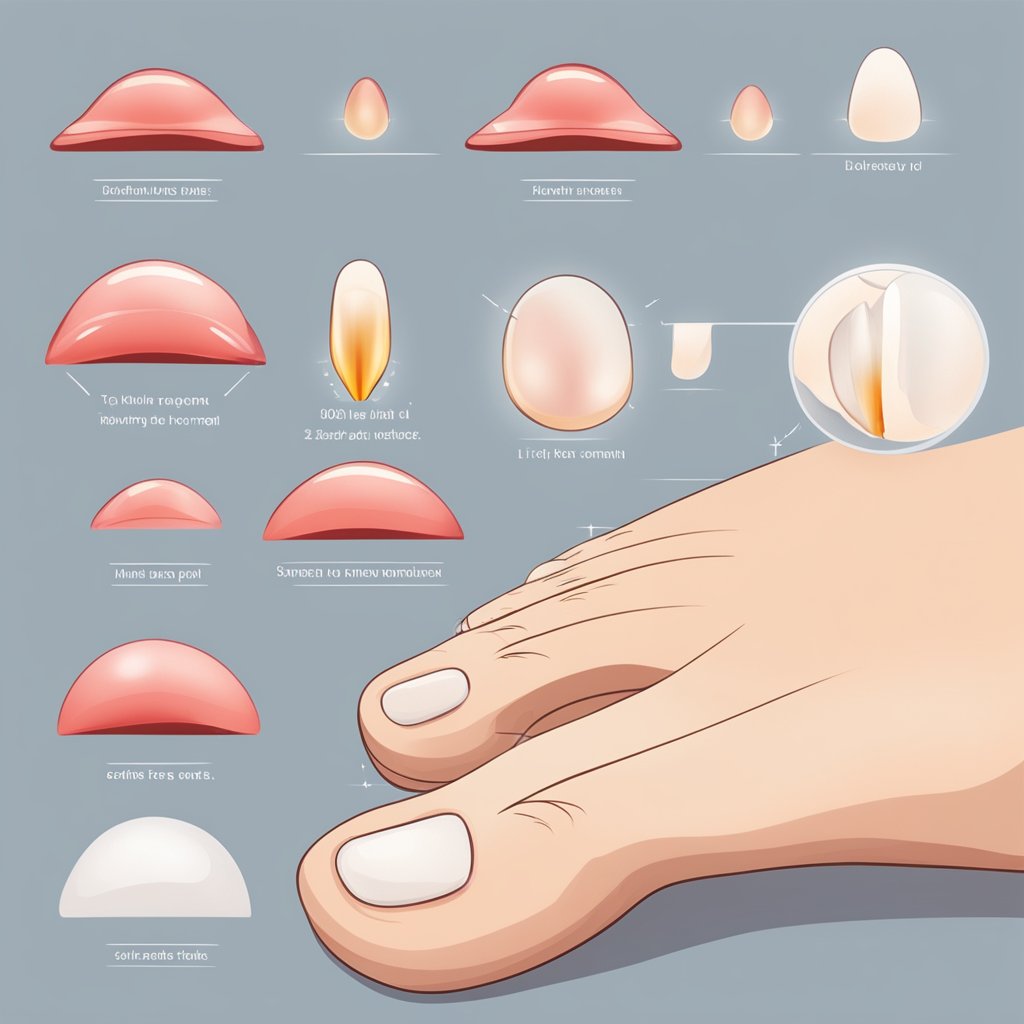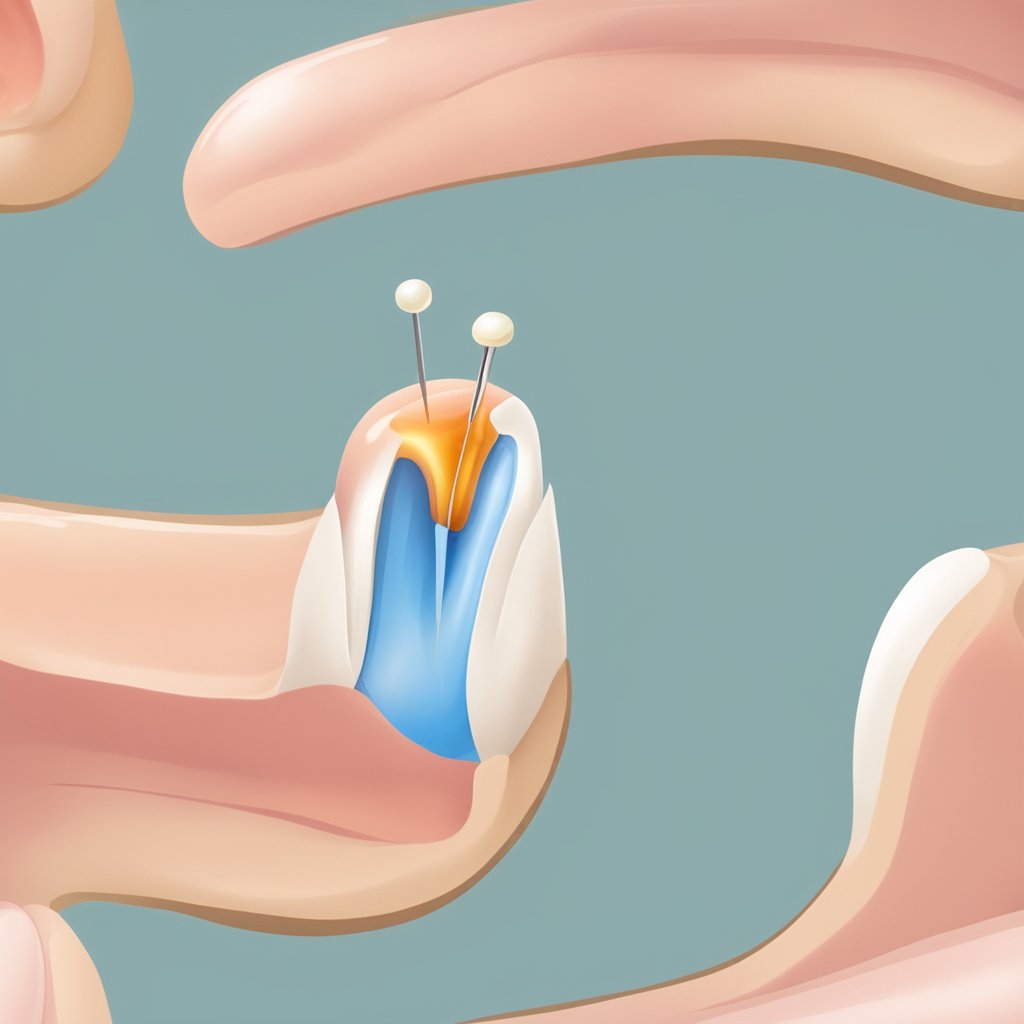Experiencing pain on the side of a toenail can be a surprising source of discomfort, especially when an ingrown toenail is not to blame. This type of pain can arise from a variety of other causes, ranging from improper footwear to fungal infections. It’s important to recognize that not all toenail pain is a result of the nail growing into the skin. I will explore this issue, taking into account other potential factors that could be contributing to the discomfort.

Understanding the precise nature of the pain is crucial in finding an appropriate solution. I will consider common reasons for non-ingrown toenail pain and provide insights on identifying the symptoms. Additionally, familiarizing oneself with preventative measures and effective treatment can help to alleviate pain as well as reduce the risk of future complications. Taking the right steps can ensure healthy toenails and comfortable feet.
Key Takeaways
- Toenail pain can stem from various causes aside from ingrown nails.
- Accurate symptom identification is necessary for appropriate treatment.
- Mitigation and prevention strategies are essential for maintaining toenail health.
Understanding Toenail Pain Not Caused by Ingrown Nails

I’m aware that toenail pain can occur for various reasons outside of ingrown toenails. Causes range from trauma to infections, and recognizing these can help you seek the appropriate treatment.
Differentiating Between Ingrown Toenails and Other Toenail Problems
The main difference between ingrown toenails and other toenail issues is the direction of nail growth. Ingrown toenails curve and grow into the skin, causing pain typically at the nail edges. Other conditions do not involve the nail growing into the skin. Fungal infections may cause the nail to thicken; trauma can lead to subungual hematomas, where blood collects under the nail; and skin conditions like psoriasis can also affect the toenail’s appearance and health without the characteristic ingrowth of the nail.
Common Symptoms and Signs of Toenail Conditions
I find that toenail conditions not caused by ingrown nails usually present distinct symptoms:
- Pain: While ingrown nails cause concentrated pain around the nail edges, other conditions might trigger widespread discomfort across the entire toe or nail.
- Redness: Infection or injury can lead to redness around the toenail, but it may not be as localized as with an ingrown toenail.
- Swelling: Similar to redness, swelling is a response to injury or infection and can affect the entire toe rather than just the nail edge.
- Discoloration: Nails affected by fungus or trauma can change color, ranging from white, yellow, to black, signaling various issues.
Toenail discomfort not caused by an ingrown nail can appear as a wide pain in the toe or nail, redness or swelling that is not limited to the edge of the nail, and discoloration that indicates a problem like fungal infection or trauma rather than the nail digging into the skin.
Causes and Risk Factors for Non-Ingrown Toenail Pain
In my experience dealing with toenail issues, I know that discomfort can be caused by various factors other than ingrown toenails. Identifying the underlying culprit is crucial for effective treatment.
Toenail Trauma and Subungual Hematoma
When it comes to toenail trauma, this can often result from a direct injury or repeated stress on the nail. Such trauma may cause a subungual hematoma, where blood collects under the nail, leading to severe pain and a bluish-black discoloration. Causes typically include dropping heavy objects on the toe or repetitive activities like running, especially with poorly fitting shoes. Risk factors escalate when participating in contact sports or if one has a profession that risks toe injury.
Fungal Infections and Toenail Diseases
Fungal infections, specifically onychomycosis, are a common cause of toenail pain not associated with ingrown nails. These infections usually lead to the thickening of the nail, potentially causing discomfort. Such infections often thrive in warm, moist environments, with risk factors including advanced age, reduced blood circulation, and a compromised immune system. Toenail diseases like psoriasis can also cause the nails to become thickened or curved, contributing to pain.
Systemic Conditions Affecting Toenail Health
Certain systemic conditions, such as diabetes, arthritis, and peripheral artery disease, can influence toenail health and thus lead to pain. For instance, diabetes can impair blood circulation and increase the risk of fungal infections. Arthritis can cause joint changes that affect the nail. Moreover, any condition that affects the circulation like peripheral artery disease may result in poor nail health and a higher likelihood of painful conditions.
Treatment Options and Home Remedies
When the side of your toenail hurts and it’s not an ingrown nail, it’s important to know the appropriate treatment options and home remedies. These can alleviate pain, reduce inflammation, and prevent infection.
Medical Interventions for Toenail Pain
If you’re experiencing severe discomfort or signs of infection, such as redness, tenderness, or pus, visiting a healthcare provider is crucial. They might recommend:
- Antibiotics: If there’s an infection, oral or topical antibiotics may be prescribed.
- Nail Removal: Partial or complete removal of the nail may be necessary if other treatments aren’t effective.
Home Treatment Approaches
For less severe pain, home treatments can be very helpful:
-
Soak Your Foot:
- Soak in warm water mixed with Epsom salt for soothing relief.
- Do this for approximately 15-20 minutes, a few times a day.
-
Topical Treatments:
- Apply a topical antibiotic to prevent or treat minor infections.
- Use an antifungal cream if a nail infection is suspected.
-
Pain Management:
- Over-the-counter pain relievers can help manage discomfort.
- Keep the area clean and protected with a bandage if necessary.
Remember always to monitor the affected area for any worsening symptoms or signs of infection, and consult a healthcare provider if the condition doesn’t improve.
Preventing Toenail Pain and Complications
I’m going to walk you through essential steps to prevent toenail pain and avoid potential complications. Keeping toenails healthy involves routine care and knowing when to seek professional advice.
Best Practices in Foot Care and Hygiene
Good foot care is crucial in preventing toenail pain. I ensure that my feet are clean by washing them daily with soap and water. Thorough drying, particularly between the toes, is equally important to prevent fungal infections which could potentially cause toenail discomfort. Here’s a brief breakdown of my routine:
- Washing: Daily with mild soap and water.
- Drying: Carefully drying feet, especially between toes.
- Moisturizing: Applying moisturizer to prevent dry skin avoiding the area between the toes.
- Socks: I opt for moisture-wicking materials, like cotton, to keep my feet dry.
- Shoes: Choosing well-fitting shoes with enough room for my toes helps prevent pressure and trauma.
When it comes to nail trimming, I use a straight-edged nail clipper and cut my nails straight across to prevent the corners from digging into the surrounding skin. Rounded nail edges can increase the risk of pain and ingrown toenails.
When to Consult a Healthcare Professional
Consulting a foot specialist like a podiatrist is something I’ve learned shouldn’t be delayed when experiencing persistent toenail pain or any signs of infection. Here’s how I determine when it’s time to consult a professional:
- Persistent Pain: Pain that doesn’t improve with basic care.
- Signs of Infection: Redness, warmth, pus, or swelling around the toenail.
- Visible Changes: Changes in nail color or texture that could indicate a fungal infection.
- Unsuccessful Self-Care: If my self-care measures don’t alleviate the discomfort.
By adhering to these preventative measures and knowing when to seek professional help, I effectively maintain my toenail health and avert complications that could arise from untreated toenail issues.
Frequently Asked Questions
Soreness on the side of a toenail can arise from various causes unrelated to ingrown nails. I’ll address some common questions related to this type of pain.
What causes soreness on the side of a toenail if there is no sign of it being ingrown?
Soreness in this area may be due to ill-fitting shoes that place undue pressure on the toenails, causing irritation. Trauma, such as stubbing the toe, can also lead to pain without ingrown nails.
How can throbbing pain under a toenail be alleviated?
To alleviate throbbing pain under a toenail, I recommend applying ice to reduce swelling and taking over-the-counter pain relief medication, such as ibuprofen or acetaminophen, according to the package instructions.
What are the potential conditions that could mimic the pain of an ingrown toenail?
Conditions like toenail fungus, bruises, or tumors such as glomus tumor can cause discomfort similar to ingrown toenails. It’s important to have a proper diagnosis by a health professional.
How should one treat a painful toenail that hurts when pressure is applied?
If a toenail hurts with applied pressure, it is often helpful to soak the foot in warm water with Epsom salt and wear open-toed shoes to minimize pressure. If pain persists, seek medical advice.
Why might the side of a big toe hurt without any signs of an ingrown nail?
Pain on the side of a big toe without visible signs of an ingrown nail could result from a bunion, arthritis, or gout. These conditions cause inflammation and can contribute to toe pain.
What are effective home remedies to soothe pain on the side of a toenail?
Home remedies that can help soothe pain include soaking the foot in warm water, applying a topical antiseptic with a bandage to keep the area clean, and gently massaging the toe to improve circulation.